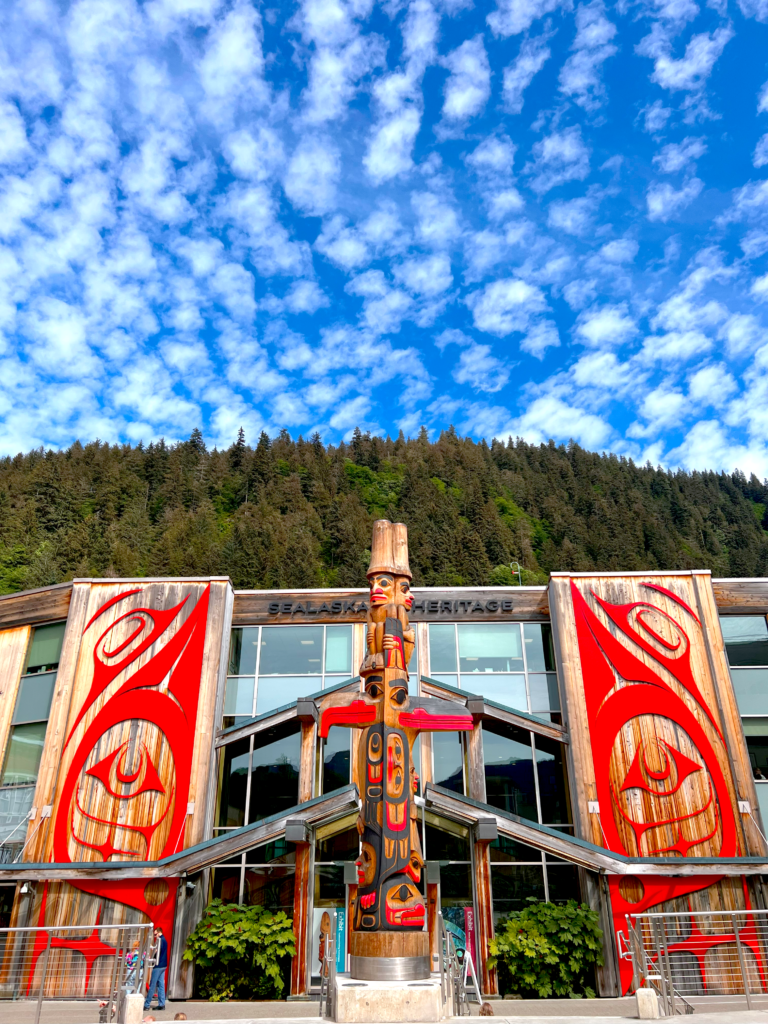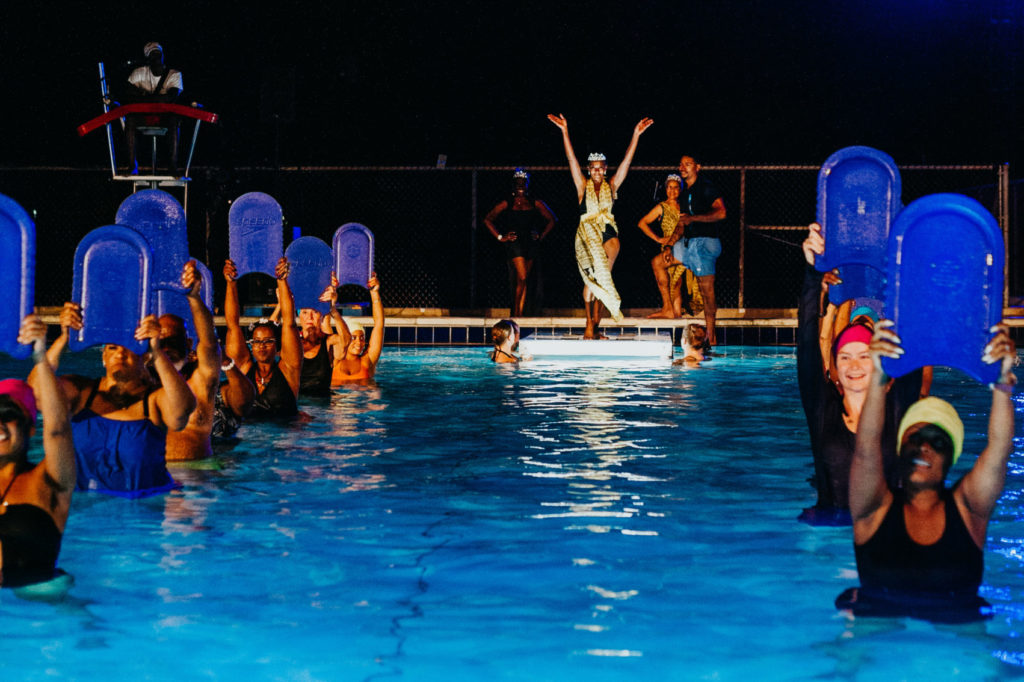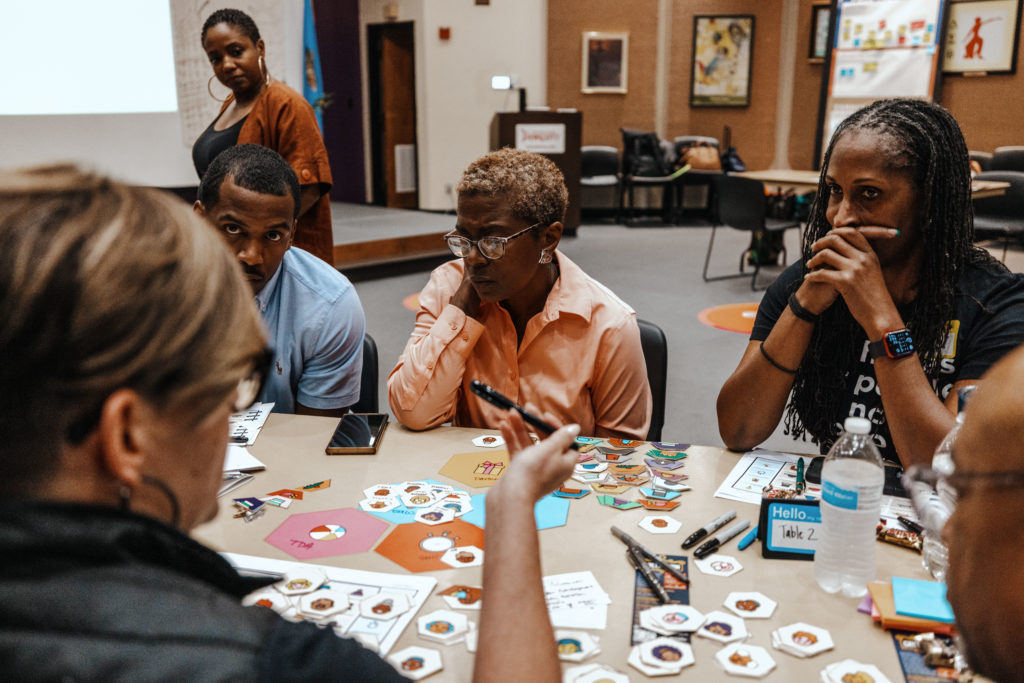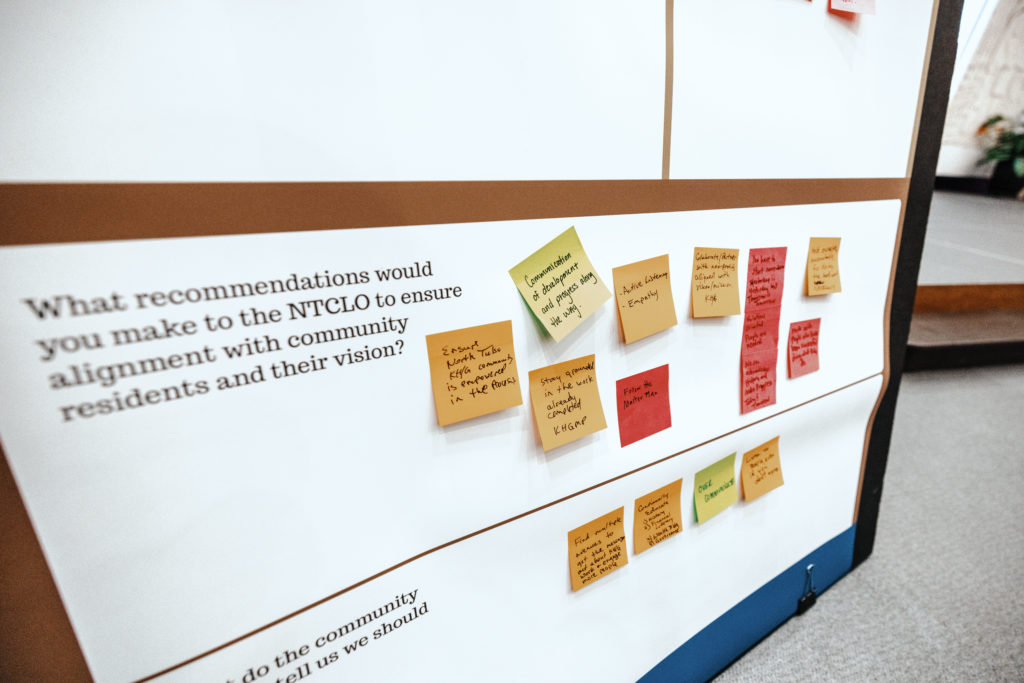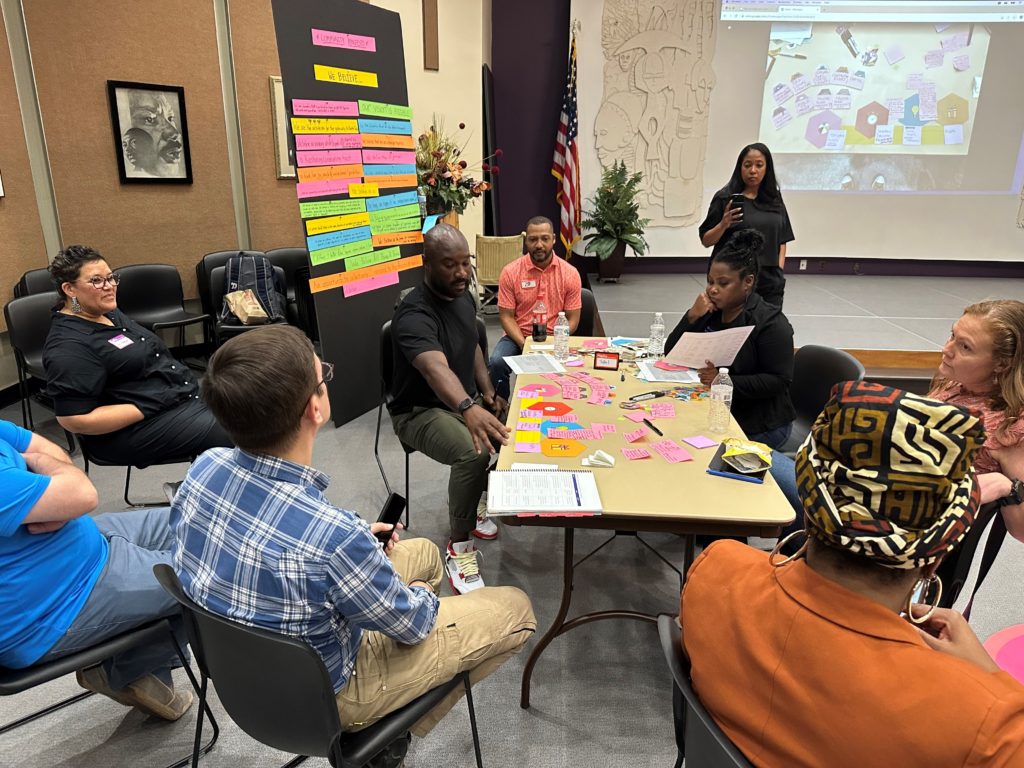Art helps the community leverage its assets and make a real impact.
Gary Hamer, Senior Community and Strategic Initiatives Manager, PartnerTulsa
Introduction
Tulsa, the most densely populated and ethnically diverse city in Oklahoma, is experiencing profound shifts. Historically based on oil and gas extraction and distribution, the city’s economy has diversified greatly in recent years. Under Mayor G.T. Bynum, who has been leading the city since 2016, municipal government has made many innovative efforts to address racial inequity as a key aspect of strengthening the city as a whole.
Challenge
Over Mayor Bynum’s two terms, the COVID-19 pandemic and protests after the murder of George Floyd in Minneapolis magnified the difficulty of addressing longstanding racial inequity and the need for the city to heal from discrimination and violence. Tulsa was the site of the 1921 Race Massacre, which burned down “Black Wall Street” and the surrounding 35 city blocks and killed hundreds of people – and was barely addressed or acknowledged by the city for the following 80 years. Despite difficulties and many lessons learned along the way, the city is pushing forward and has made enormous strides in hosting open dialogue and funding infrastructure equitably.
Of particular focus has been the Kirkpatrick Heights – Greenwood neighborhood, the former site of Black Wall Street, the 1921 Race Massacre, and then later, urban renewal efforts which razed more buildings and constructed a highway bisecting the neighborhood. Many large swaths of the predominantly African American neighborhood have been vacant and underutilized for decades. Mayor Bynum, city staff, and their partners have focused multiple efforts on community-engaged, creative planning efforts on addressing the longstanding inequity impacting residents in this neighborhood, as well as other neighborhoods that have historically been disinvested or discriminated against.
Impact
“I think one of the biggest things that may be unseen is our rewiring of our relationship with the government in terms of mental models about how we work together. So if we want to have this event, here’s how the permitting process works, we get some feedback. Having a more agile government ready to work with people, but also helping people see this is how the system works and how you can navigate it to have this block party, etc. So it just created more conversations and participatory processes.”
Ashley Philippsen | Executive Director, Impact Tulsa
Three projects highlight some of the ways the City of Tulsa and its partners have experimented in supporting creative, locally-engaged efforts to address institutionalized equities from the ground up.
The Greenwood Art Project
In 2021, Tulsa commemorated the centennial of the 1921 Tulsa Massacre in a variety of ways. The city had previously been invited by Bloomberg Philanthropies, with which they had previously worked on a variety of projects, to apply for the Public Art Challenge grant. The city felt that a large arts project would be an important component of the commemoration. The Greenwood Art Project was awarded a $1 million grant and from April to October 2021, a series of large-scale, community-engaged arts projects were completed.
It was designed as a placekeeping – rather than placemaking – process. Though lead artist, Rick Lowe, is not local to Tulsa, he is internationally recognized as one a leader of community-engaged arts work, and he and the city prioritized partnership with and funding for local artists. A community grant process distributed funds to 30+ grantees and 28 projects. Projects spanned various artistic disciplines and locations across the city: the daughter of a survivor of the massacre organized a jazz ball, documentaries were commissioned, tents honoring the temporary shelters used by massacre survivors were installed, a parade was held, and so much more. The Project Director, local cultural organizer and artist Jerica Wortham, made sure youth were involved in a variety of ways.
A comprehensive evaluation showed that the project was successful in increasing foot traffic to disinvested neighborhoods, as well as increasing a sense of civic pride. Several of the projects were located on sites where the massacre had itself occurred, including the Steps to Nowhere: ominous steps leading to a large vacant green space called Kirkpatrick Heights, where homes were burned during the massacre. Staging a pop-up local arts gallery here helped residents reconcile with this space.
The initiative also helped create other opportunities for local artists to be commissioned for public art, including a 2021 program to install murals on several highway underpasses (a collaboration between the Oklahoma Department of Transportation and the Oklahoma Arts Council), to open in 2024. The Downtown Tulsa promotional district also began hiring many of the local artists featured in the Greenwood Art Project, instead of commissioning artists from out of state.
Greenwood – Kirkpatrick Heights Master Plan
Following the Greenwood Art Project, the City of Tulsa recognized the need for a comprehensive, community-led vision for development in the neighborhood that would meaningfully benefit its Black residents. In 2021-2022, the city and its economic development arm, PartnerTulsa, led the Our Legacy Tulsa Plan, a 12-month process that engaged over 1,000 residents over 40+ meetings to create a community vision for the neighborhood, centered around 56 acres of vacant land that Mayor Bynum has called “the most important piece of land in the City of Tulsa, from a spiritual standpoint.” The city then used its power and skills to do the nuts and bolts planning, which are more coordinated since Mayor Bynum merged six legacy development authorities into a new one, PartnerTulsa, focused specifically on equitable economic development.
The final plan incorporates community leaders’ ideas, including space for arts and culture – a place to celebrate Juneteenth and other community gatherings, as well as a creative way to commemorate the 1921 Race Massacre in an ongoing way. Since completion of the Master Plan, the city and PartnerTulsa are also finding ways to increase community leadership in the implementation of the plan and ownership of the development itself through a community advisory board, a new potential community development corporation, and even a community land trust.
Community Impact Initiative
More recently, PartnerTulsa piloted their new Community Impact Initiative. The initiative has made grants to six community-based organizations that work in disinvested neighborhoods throughout Tulsa for projects of their choosing, which range from murals with local artists to rehabilitation of culturally significant signage. The initiative seeks to help develop locally-sourced, community-driven solutions to ongoing neighborhood challenges. PartnerTulsa leveraged internal funds combined with a grant from the George Kaiser Family Foundation for each organization to design, develop, and administer local projects that work on addressing economic, social, and cultural inequities for their residents. The six neighborhood organizations are: NTEDI (North Tulsa Economic Development Initiative), Phoenix District, Chamberlain Area Neighbours, Growing Together, Greenwood Main Street, and the Global District, a neighborhood outside the city center with immigrant communities and businesses, which was the site of a project Mayor G.T. Bynum later brought to the Mayors’ Institute on City Design.
To create long-lasting impacts, PartnerTulsa has created an intensive technical assistance program for the pilot initiative. City staff attend monthly meetings with the participating community-based organizations to help pave the way for their projects to move forward, and teach leaders how to navigate implementation of future projects. More than just offering technical assistance, PartnerTulsa is utilizing a “scaling deep” approach (instead of scaling up) to develop long-lasting, trusting relationships with community leaders, many of whom have had negative experiences with the city in the past. PartnerTulsa is working with each organization every step of the way, aiming to increase resident participation in local planning efforts, help community organizations network with each other and the city, increase local understanding of government policies, and successfully implement grant-funded, community-driven development projects.
Lessons for City Leaders
- Empowering artists to find creative ways to honor, openly discuss, and attempt to repair harms committed by city government can create new opportunities for healing, partnership, and equitable development.
- Leveraging grant projects that allow a city to invest in the arts as methods for connecting with a wider range of people – including youth, emerging artists, and more – can help influence future city processes and build community-government relationships.
- Working to implement arts events also helps identify ways city government can become more agile and accessible, which in turn allows more community residents to bring their full talents to bear.
- Structural changes to city government, such as merging legacy authorities into more centralized, coordinated departments, can pave the way for more effective community collaboration and focused experimentation.
- Most critically, building capacity among community-embedded artists – from providing technical assistance to directly funding their creative endeavors – brings rich layers of opportunity to enact change.


